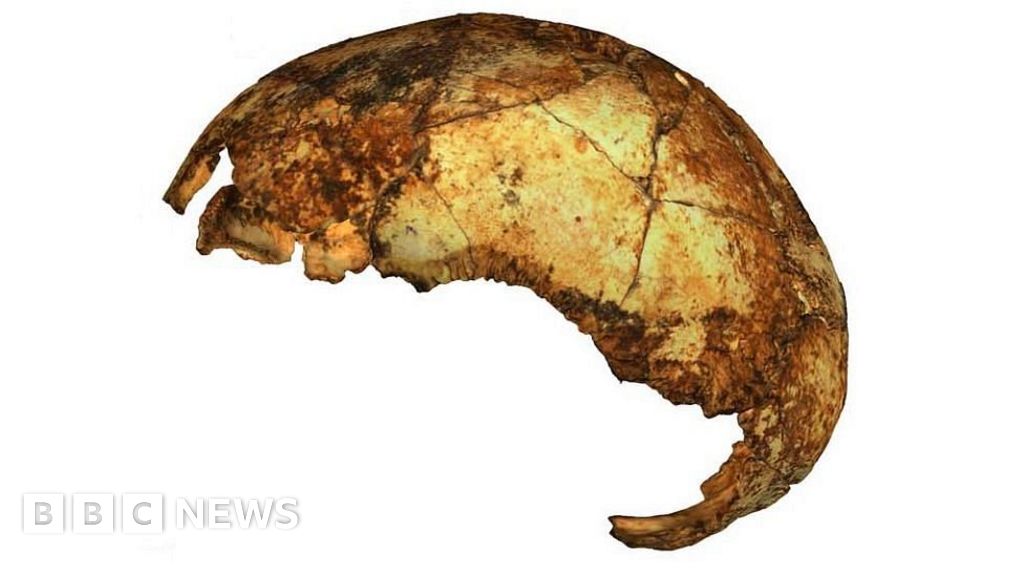
Two million years ago, three different human-like species were living side-by-side in South Africa, a study shows.
The findings underline a growing understanding that the present-day situation, where one human species dominates the globe, may be unusual compared with the evolutionary past.
The new evidence comes from efforts to date bones uncovered at a cave complex near Johannesburg.
The research has been published in the journal Science.
The new work also revealed the earliest known example of Homo erectus, a species thought to be a direct ancestor of modern humans (Homo sapiens).
The three groups of hominins (human-like creatures) belonged to Australopithecus (the group made famous by the "Lucy" fossil from Ethiopia), Paranthropus and Homo - better known as humans.
Andy Herries, from LaTrobe University in Melbourne, Australia, and colleagues evaluated remains found at the Drimolen Cave Complex using three different scientific dating techniques: electron spin resonance, palaeomagnetism and uranium-lead dating.
"We collated all of the dates from each of these techniques and together they showed that we had a very precise age. We now know that the Drimolen Main Quarry and all of the fossils in it are dated from 2.04 to 1.95 million years ago," said co-author Stephanie Baker, from the University of Johannesburg.
The Drimolen complex has produced multiple ancient fossils over the years, including those of ancient hominins.
But a few years ago, researchers uncovered two new skullcaps. One of these belonged to the relatively primitive species Paranthropus robustus. The other was more modern in appearance and was identified as Homo erectus. They named the H. erectus skullcap DNH 134.
Homo erectus is one of our direct human ancestors and may have been the first early human species to migrate out of Africa into the rest of the world. Not only is this the earliest example of the species anywhere in the world, but it's the only specimen known from South Africa.
"Until this find, we always assumed Homo erectus originated from eastern Africa. But DNH 134 shows that Homo erectus, one of our direct ancestors, possibly comes from southern Africa instead," said Stephanie Baker.
"That would mean that they later moved northwards into East Africa. From there they went through North Africa to populate the rest of the world."
We once thought of human evolution as a linear progression, with modern humans emerging at the end as the pinnacle of evolutionary development. But everywhere we look, it's increasingly clear the real picture was much messier.
As a case in point, another study published this week in Nature journal used modern techniques to date a well-preserved skull found in a quarry at Kabwe, Zambia, in 1921. The skull which is more primitive than those of modern humans, but more advanced than Homo erectus, was considered to be around 500,000 years old based on its anatomy.
It is considered by many researchers to belong to a species called Homo heidelbergensis - a common ancestor of modern humans and Neanderthals.
But scientists who have dated small samples of bone and teeth from the skull,as well as other material associated with the specimen, have shown that it is much younger - between 324,000 and 276,000 years old.
Lead author Prof Chris Stringer, from the Natural History Museum in London, UK, said: "This is surprisingly young, as a fossil at about 300,000 years old would be expected to show intermediate features between H. heidelbergensis and H. sapiens. But Broken Hill shows no significant features of our species."
The discovery implies that at least three different Homo species co-existed at this time in Africa.
Prof Stringer added: "Previously, the Broken Hill skull was viewed as part of a gradual and widespread evolutionary sequence in Africa from archaic humans to modern humans. But now it looks as if the primitive species Homo naledi survived in southern Africa, H. heidelbergensis was in south-central Africa, and early forms of our species existed in regions like Morocco and Ethiopia."
In yet another important human evolution study this week, researchers analysed ancient proteins from 1.9-million-year-old Homo erectus fossils found at Dmanisi in Georgia and from a species known as Homo antecessor, which is thought to have been present in Spain from 1.2 million years ago to 800,000 years ago.
The protein analysis helped establish relationships between the two species and other hominins for which we have DNA data. The use of proteins is helping extend our knowledge of evolutionary relationships beyond the ages at which it becomes difficult to obtain DNA evidence, because of the breakdown of the molecule over time.
The study showed that H. antecessor, whose validity as a separate species has been questioned in the past, is a close sister lineage to modern humans and other recent Homo species, such as Neanderthals and Denisovans.
Follow Paul on Twitter.
https://news.google.com/__i/rss/rd/articles/CBMiNWh0dHBzOi8vd3d3LmJiYy5jb20vbmV3cy9zY2llbmNlLWVudmlyb25tZW50LTUyMTMzNTM00gE5aHR0cHM6Ly93d3cuYmJjLmNvbS9uZXdzL2FtcC9zY2llbmNlLWVudmlyb25tZW50LTUyMTMzNTM0?oc=5
2020-04-02 18:15:24Z
52780704849627
Tidak ada komentar:
Posting Komentar